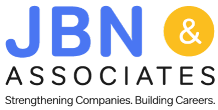Working from home was once a benefit offered mostly by digital businesses without a centralized office but has become the norm in a post-pandemic world. While many businesses have tried to return to a more traditional work environment, they’re finding employees unwilling to give back the freedom they’ve grown accustomed to over the last few years. Businesses tempted to force employees to return to the office risk alienating their workforce and losing their most talented team members to competitors willing to embrace the modern workplace.
With businesses needing to remain flexible to attract top talent, embracing the best practices for successful remote workforce management is key for employers. This shift requires embracing new management ideas, especially for more traditional employers used to determining productivity by desk time and in-person monitoring.
Continue reading to discover the best practices for distributed workforce management while helping employees learn how to work at home effectively.
Remote Workforce Management Requires Reconsidering the Workday
Managing a remote team requires trust and a willingness to give employees more autonomy.
Without the ability to constantly monitor employees at a shared workspace, employers may find it more useful to judge an employee’s performance by productivity and quality standards rather than time spent at their desk.
Clocking in and out at certain times has only ever demonstrated an employee’s ability to follow a schedule. Their productivity at the office was never proportional to whether they spent eight hours at their desk.
Remote workforce management requires recalibrating how managers lead their people by avoiding micromanagement and enforcing the traditional workday. Allowing employees to be productive on their schedule will eliminate wasting time and energy on the impossible task of monitoring individuals working across time zones while demonstrating trust in your people to act professionally.
Understand the Challenges Created by a Virtual Workforce
Employers can eliminate much of the frustration they experience with distributed workforce management by understanding the challenges they will encounter in advance. Certain challenges are unavoidable, but coming to terms with them makes it easier to find workable solutions to keep a business running more like normal.
Typically, employers across industries will face the following challenges:
A Lack of In-Person Facetime
Communicating face-to-face was vital for workplace productivity for decades. Outside of meetings, short interactions in hallways, at lunch tables, and around water coolers allowed creativity to flourish and built camaraderie among team members. The absence of the ability to stop by a coworker’s desk to ask a question or to say hello will be felt in a virtual work environment.
Employers must embrace collaboration tools like Slack or Skype that enable communication outside email and task management systems. These tools foster real-time collaboration, improve team productivity, and streamline communication across different departments and time zones. Adopting collaboration tools allows employers to create a more flexible and inclusive work environment.
Communication Breakdowns
Important details get missed when employees primarily communicate in messages sent over email or through task management systems. This creates breakdowns where important points aren’t fully explained, or one party misunderstands what needs to be done. These breakdowns can lead to delays, errors, and misaligned priorities.
Maintaining clear communication highlights the need for collaboration tools that facilitate clearer, contextual conversations that remove ambiguity. However, these tools do have limitations. Managers must also encourage employees to use video conferencing tools, such as Zoom or Microsoft Teams, which allow for face-to-face interactions and promote clearer communication by capturing visual cues and non-verbal expressions rather than relying solely on written messages.
Dealing with Distractions
Whether coffee shop noise or a toddler shouting in the background, dealing with distractions during calls and meetings is part of doing business in a virtual workplace. However, by implementing certain strategies, businesses can effectively navigate and mitigate these issues.
It’s okay to expect employees to create a dedicated and quiet workspace. This space should be free from potential disturbances, allowing employees to fully engage and participate in meetings without distractions. By setting clear boundaries to create an environment conducive to focused work, businesses can communicate and collaborate with their employees without allowing distractions to pull focus more than necessary.
When employers understand the challenges of managing a remote workforce, they become better equipped to find solutions rather than getting frustrated, creating a more successful and thriving work environment.
Set Clear Productivity Standards
Setting clear productivity standards is essential for effectively managing a remote workforce. By establishing clear expectations and measurable goals, employers can provide a framework that guides employees toward success.
Defining specific and achievable productivity targets for each individual or team is important. These targets should be aligned with the organization’s overall objectives and communicated transparently to all employees. This clarity allows remote workers to understand what is expected of them and empowers them to prioritize their tasks accordingly.
Utilizing productivity tracking tools or project management software can provide valuable insights into the progress of tasks and projects. These tools enable employers to monitor individual and team productivity, identify bottlenecks, and allocate resources effectively. With access to real-time data, employers can make informed decisions and offer support or guidance when needed.
By defining expectations, providing feedback, and utilizing workflow tools, employers can create a culture of accountability that resembles the efficiency of an in-office work environment.
Create Stronger Internal Processes
Businesses can create stronger internal processes that improve operations and facilitate smooth interactions among team members by establishing clear workflows, streamlining communication channels, and implementing effective collaboration tools.
One aspect of creating stronger internal processes is mapping well-defined workflows and procedures. This involves documenting and standardizing key processes, such as task assignments, project management, and decision-making protocols. By clearly outlining the steps and responsibilities involved in each process, employees can navigate their tasks more effectively and minimize confusion or delays.
Businesses can establish regular check-ins and status updates to maintain alignment and ensure everyone is on the same page. These virtual meetings can help address challenges, clarify priorities, and allow for open discussions among team members. Encouraging a responsive and timely communication culture is also important to prevent bottlenecks and keep projects moving forward.
Embracing the Future of Work
Successfully managing a remote workforce requires a combination of thoughtful strategies and effective implementation. From embracing collaboration tools to setting clear productivity standards, businesses can promote effective communication, enhance productivity, and maintain cohesion among remote teams.
JBN & Associates connects employers with talented professionals who thrive in a virtual workplace. Our extensive network of skilled individuals spans various industries, ensuring we can match employers with the right candidates to meet their specific requirements. With our expertise in recruitment and dedication to client satisfaction, we can provide guidance on effectively hiring and managing remote employees.
Contact our team today to schedule a consultation with a recruiter and take the first step toward improving how your business handles the modern demands of remote workforce management.





